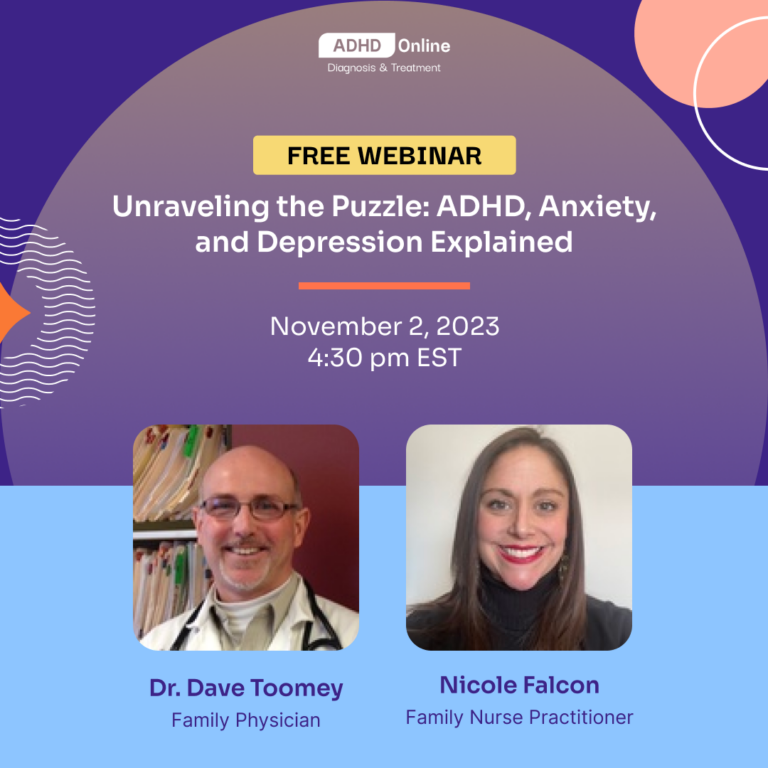By Diana Kelly Levey
An editorial recently published in the Journal of Attention Disorders highlights a significant spike in ADHD stimulant prescriptions from 2016 to 2021 — with an especially steep increase from 2020 to 2021. And, the data shows, that spike was especially pronounced among women.
The editorial’s authors suggest the increase in these prescription stimulants could be due to a number of factors. Factors include overall efforts to improve education about adult ADHD and expanding access to ADHD care. Other factors include overwhelmed patients seeking treatment during the COVID-19 pandemic and more neurodiversity awareness movements and ADHD information online. And a final factor is likely more companies working with mental health providers and prescribing stimulants online.
The editorial’s authors, and ADHD experts throughout the U.S., are asking other questions about the reasons for the stimulant spike in females. Was it because women bore the brunt of the COVID-19 crisis from an economic standpoint? Was it because mental health issues, including symptoms of anxiety and depression, increased in women during this time?
Or, were doctors prescribing these stimulants to women because they were finally asking for them, or doctors were finally recommending them, after years in which women were underdiagnosed with ADHD?
Stephen P. Hinshaw, PhD, distinguished professor of psychology at the University of California, Berkeley and author of Straight Talk about ADHD in Girls: How to Help Your Daughter Thrive, says he thinks more stimulants are being prescribed to new populations for a few reasons.
“One, because of a legitimate recognition that women can and do display ADHD,” he says. “Second, the pandemic has placed a premium on self-regulation, fast tasking, and adaptation to new norms of communication and work — all of which are challenges for people — especially women — with ADHD.”
Another possible contributor, Hinshaw says, is people are increasingly able to receive stimulant prescriptions online without an in-depth assessment and careful diagnosis. (Read here about ADHD Online’s comprehensive and rigorous assessment and treatment processes.) A final possible contributor, he says, is that too many medical doctors are most familiar with ADHD medications — and not as familiar with other evidence-based, non-medication treatments for adult ADHD like cognitive behavioral therapy.
Over the past 25 years, things have changed in understanding of ADHD, particularly with more research recognizing that populations other than young boys have it, Dr. Hinshaw says.
“Girls can and do have ADHD in childhood … and girls are more likely than boys to show the exclusively inattentive ‘form’ of this condition,” he says. “Yet it’s precisely such inattentive, distractible, and/or poorly self-regulated behavior patterns that are more likely to persist into adulthood.”
In the past decade or so, experts have increasingly come to understand that many adults have ADHD, even though this neurodevelopmental disorder may not have been recognized during childhood or adolescence. And recognition of ADHD in women has particularly increased, because females have been so underdiagnosed historically.
Dr. Hinshaw says girls may have compensated, “with a lot of family support and with a lot of anxiety, to ‘cope’ with underlying ADHD.
Maura Charles, a product management consultant based in Long Island, N.Y., received an ADHD diagnosis last year — at age 48. She has been trying various treatment options to manage the symptoms.
Some of her symptoms came to light during the pandemic. Charles had difficulty completing household tasks despite the extra time at home, found herself devouring books (and going down research rabbit holes in the process), and struggled with to-do lists. But she now understands that some of those issues had been happening for a long time, as far back as she can remember.
In 2022, after less than a year of working with her, Charles’ psychiatrist suggested an ADHD assessment and found that she was at or above the threshold for all of the behaviors that indicate ADHD.
After receiving her ADHD diagnosis, Charles says, she felt relieved in some ways that her behavior and distracted tendencies “weren’t personal flaws.” It took a while to accept her diagnosis, she says. But after reading a lot about adult ADHD and working with her therapist, she came to truly understand that ADHD is a biological condition that wasn’t linked to her personality.
She also says she felt “angry” that previous therapists and psychiatrists never suggested the possibility of ADHD as they worked with her on managing anxiety throughout her 20s and 30s.
The increase in stimulant prescriptions for women has become especially noticeable over the past several years. But for a decade, the fastest-growing market for ADHD medications has been women, Dr. Hinshaw says.
“That’s largely because of the heretofore hidden nature of ADHD in women, along with delayed recognition until beyond adolescence, when post-secondary education, independence, vocational skills, etc. are at a premium,” he says.
For many years, providers assumed that the problem was “anxiety and/or depression” in women — not ADHD, Dr. Hinshaw says. This turned into a historical failure to recognize ADHD in women, he says.
“But only a trained clinician, experienced in differentiating anxiety and/or depression from ADHD — or realizing that they can occur together — can make the real call for their patient,” he says.
In their Journal of Attention Disorders editorial, the authors wrote: “ADHD needs to now take its rightful and more central place in adult mental healthcare.”
Perhaps it’s starting to and that’s why more stimulant medications were prescribed since 2016.
The editorial authors also hypothesize that the increase in stimulant prescriptions may relate to a wider range of providers writing the prescriptions — including primary care physicians, nurse practitioners and professionals working with online providers.
The authors suggest that high-quality education about ADHD and its symptoms is important as these new groups of providers may be more involved in treating people.
“Despite its prevalence, clinicians rarely receive relevant specialized training, and may have misconceptions about, or not even recognize, adult ADHD,” the editorial authors wrote.
Practitioners must understand that ADHD is typically chronic and persists into adulthood, but is often overshadowed by other conditions and disorders that often come with it — including addiction, depression, anxiety and personality disorders, the authors wrote. Practitioners must also understand that people not traditionally associated with ADHD — women, people of color and older adults — can have it.
Although Charles was prescribed a stimulant at first by her psychiatrist, she experienced adverse side effects and quickly went off it. Soon after, she started taking a nutritional supplement — Rhodiola rosea — upon her psychiatrist’s suggestion and her primary care physician’s supervision.
Some clinical trials have indicated the supplement may have anti-fatigue and anti-anxiety effects. Clinical trials are underway to study any possible positive effects for ADHD.
Charles was already taking the supplement to help with perimenopausal symptoms like night sweats. So her psychiatrist simply increased the dosage. So far, she says, she thinks it’s helped with cognitive functioning, like alertness and attention.
She’s also working on getting help beyond medications and supplements. “I started working with an ADHD coach who specializes in helping adults with ADHD,” she says. “So far, it feels very positive and like a way forward.”
Dr. Hinshaw recommends that adults recently diagnosed with ADHD should talk with their psychiatrists and primary care doctors about medication options, as well as meet with a mental health professional to talk and learn about coping mechanisms. They can also find help online or in-person support groups, and seek help and support through work.
He says people find the best results through a combination of medication plus cognitive behavioral therapy, learning organizational skills and time management, and a balanced lifestyle.
“It’s important that adults diagnosed with ADHD understand that there are clear side effects, and addiction potential, from stimulants,” he says. “So work with a trusted and experienced clinician.”




